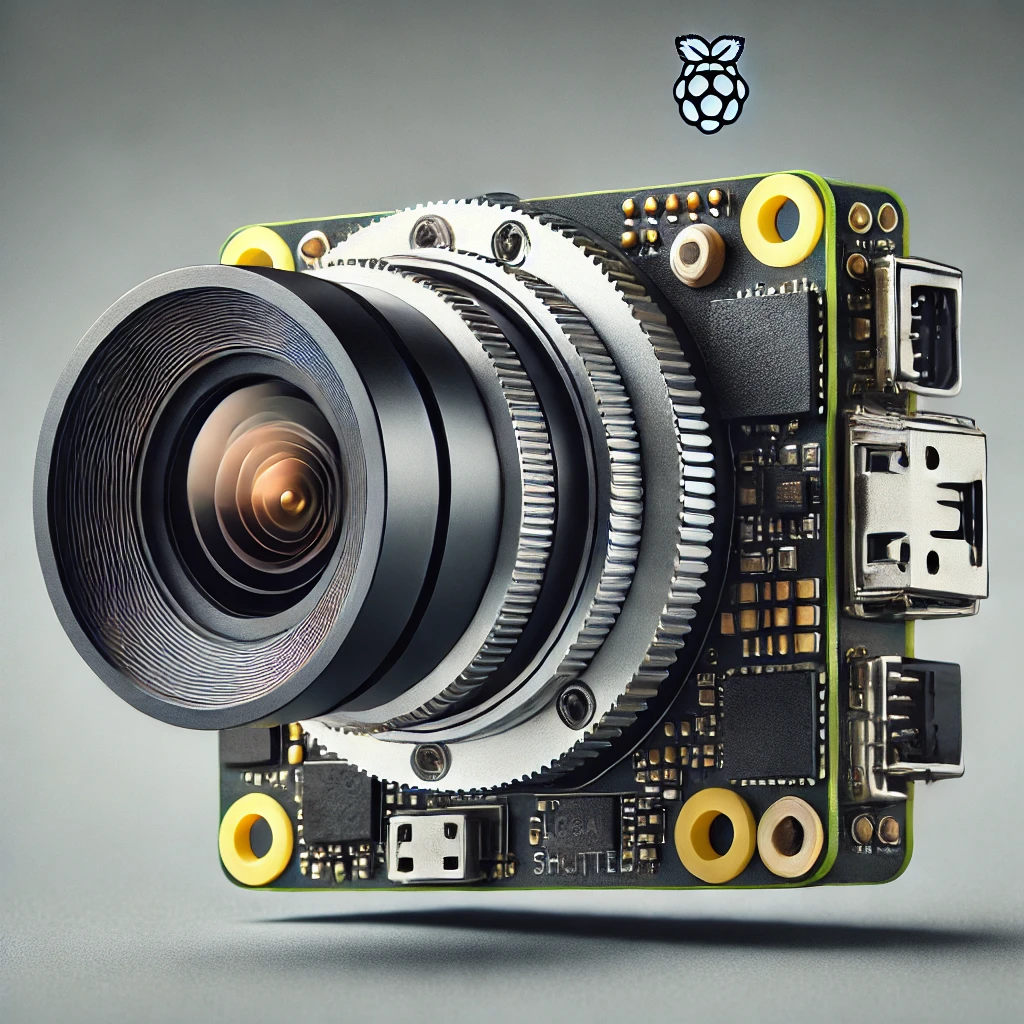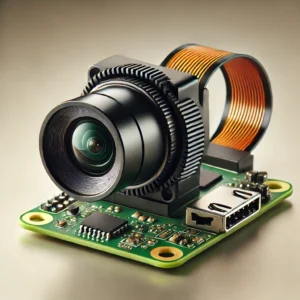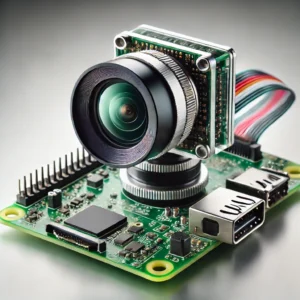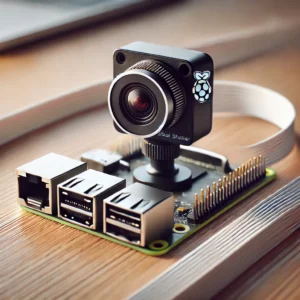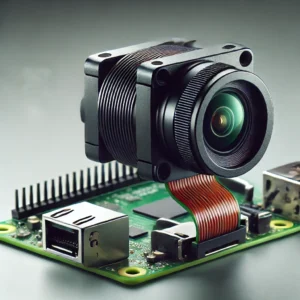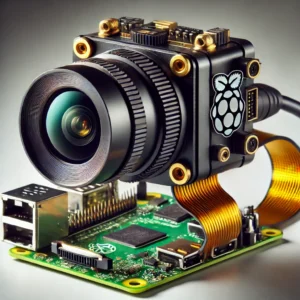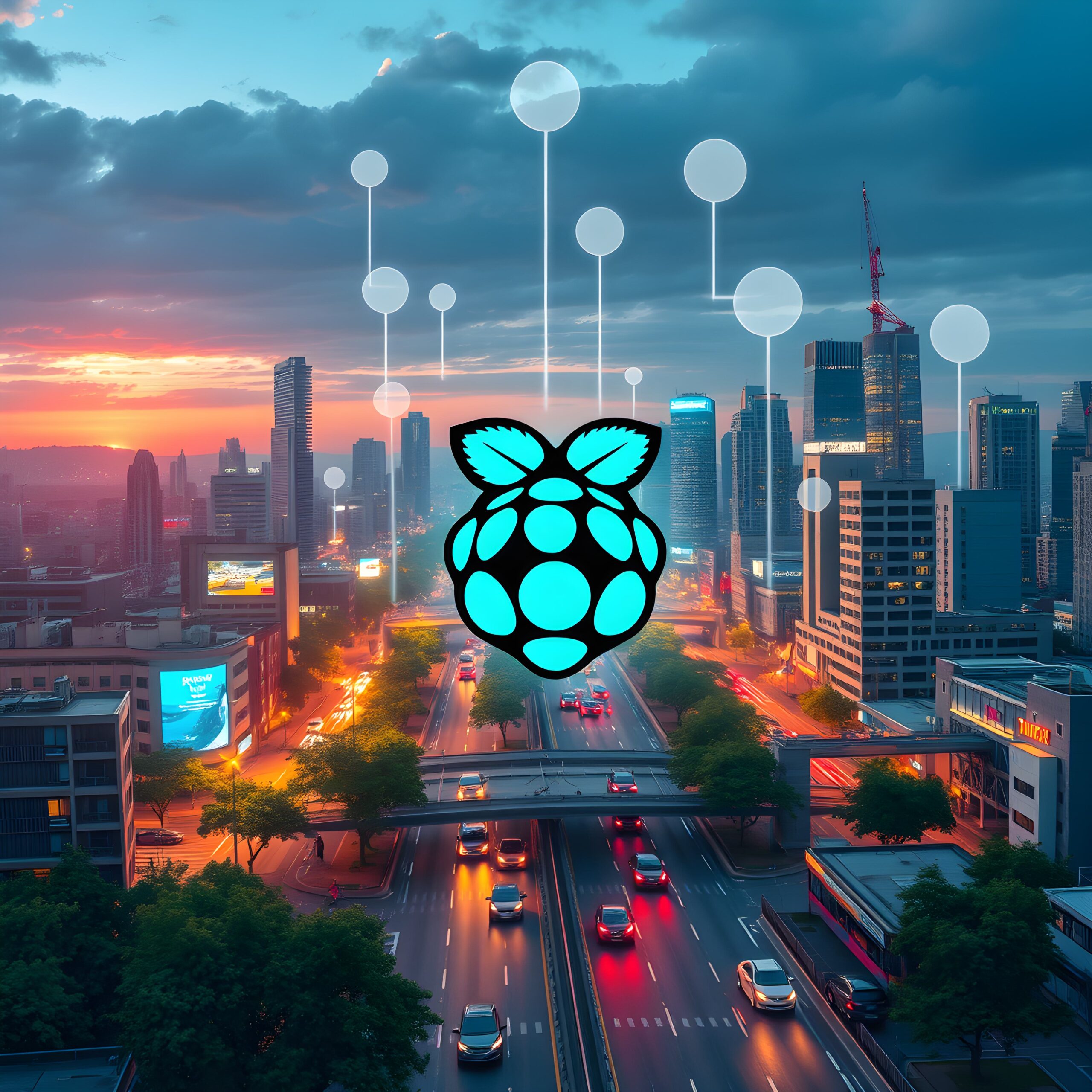The Raspberry Pi Global Shutter Camera is a revolutionary addition to the Raspberry Pi camera lineup, designed specifically for projects that demand high-speed, distortion-free photography. Built around Sony’s IMX296 sensor, this camera captures images without the typical rolling shutter distortions, making it ideal for machine vision, robotics, high-speed motion capture, and other scenarios where rapid movements need to be documented with precision. This camera expands the possibilities for developers, hobbyists, and professionals in need of advanced motion capture solutions within the versatile Raspberry Pi ecosystem.
Understanding the Importance of a Global Shutter Camera
A global shutter is more than just a camera feature—it’s a critical technology for those needing high-fidelity images during fast movements. Unlike a rolling shutter, which captures images line by line (from top to bottom), the global shutter captures an entire frame at the same time. This simultaneous capture reduces the chance of motion blur and image distortion, especially when photographing or filming high-speed actions. The global shutter captures each part of the image in sync, delivering a distortion-free shot even when the subject is moving quickly.
This feature makes the global shutter camera particularly valuable for fields like robotics, where a single frame’s accuracy can influence the success of an automated task, and scientific research, where moving elements must be captured with precision.
Key Features of the Raspberry Pi Global Shutter Camera
The Raspberry Pi Global Shutter Camera introduces several features that make it a standout choice for high-speed capture:
-
1.6 Megapixel Resolution: Although the resolution may seem modest compared to high-end cameras, the 1.6MP still provides detailed imagery for most industrial and scientific applications. It captures at 1456×1088 pixels, which is ample for motion-based uses.
-
Sony IMX296 Sensor: Known for its sensitivity to light, the IMX296 sensor features a pixel size of 3.45μm × 3.45μm. This larger pixel size increases light sensitivity, allowing the camera to perform well in low-light situations—a boon for industries requiring around-the-clock operations.
-
Lens Compatibility: The camera supports C- and CS-mount lenses, which means users can switch lenses depending on the requirement of the project. These lenses offer flexibility across a wide range of focal lengths and fields of view, making it adaptable for various imaging needs. Raspberry Pi’s official lenses, like the 6mm CS-mount and 16mm C-mount lenses, can be used for optimal results.
-
Compatibility with All Raspberry Pi Models: The camera is compatible with any Raspberry Pi model that has a CSI (Camera Serial Interface), including the Raspberry Pi Zero, Raspberry Pi 4, and other models. This cross-compatibility simplifies setup, allowing users to integrate the camera into existing Pi-based projects seamlessly.
-
Adjustable Back Focus: With adjustable back focus lengths (between 12.5mm and 22.4mm), users have greater control over how the image sensor interacts with the lens, enhancing flexibility in custom projects.
Setting Up the Raspberry Pi Global Shutter Camera with Raspberry Pi Zero
For developers using the Raspberry Pi Zero or other models, the global shutter camera is straightforward to set up. Below is a step-by-step guide:
1. Updating the Raspberry Pi OS
- Before connecting, ensure your Raspberry Pi OS is updated. This can be done using the terminal commands:
- This update ensures compatibility with the camera module.
2. Connecting the Camera
- Attach the camera module to the CSI connector on your Raspberry Pi Zero. For optimal performance, ensure that the connector is secure, and the camera is firmly attached.
3. Configuring Camera Settings
- To enable the camera, go to Raspberry Pi Configuration and open the Interfaces tab. From there, select Camera and enable it. Reboot your Pi to apply the settings.
4. Testing the Camera
- To test the camera, use the
raspistillcommand or, for users on the newer Bullseye OS,libcamera-still. Running these commands will let you verify that the camera is connected and capturing images as expected.
This setup process is simple, making it accessible for both beginners and experienced developers.
In-Depth Analysis: Benefits of the Global Shutter Camera
Motion Capture without Distortion
The global shutter’s primary advantage is the elimination of motion distortion. When capturing moving objects, traditional cameras with rolling shutters can produce “jelly” effects or warping as they scan the frame line by line. The Raspberry Pi Global Shutter Camera solves this issue, providing crystal-clear images of fast-moving subjects.
Enhanced Low-Light Performance
The IMX296 sensor’s larger pixel size allows it to capture more light than many other sensors, making it effective in low-light environments. This feature benefits applications like security and surveillance, where lighting conditions can vary, and consistent imaging is essential.
Versatile Lens Support
The camera’s C- and CS-mount options allow users to select lenses that best suit their project needs. For instance, wide-angle lenses can capture larger fields of view, which is essential in areas like autonomous vehicle navigation. Conversely, telephoto lenses can focus on distant objects, a useful feature for wildlife photography or surveillance.
Applications of the Raspberry Pi Global Shutter Camera
1. Robotics and Automation
Robots and automated systems rely heavily on accurate visual data to perform tasks effectively. The global shutter camera helps prevent motion artifacts that can mislead robots or slow down processing. In warehouse automation, for example, robots can use the camera to accurately scan products on a conveyor belt without distortion, ensuring efficiency and precision.
2. Machine Vision for Quality Control
Machine vision is widely used in manufacturing for quality assurance. For instance, in a production line setting, the global shutter camera can inspect items at high speeds, detecting flaws in real-time. The fast and clear image capture is ideal for identifying small defects that could be missed by the human eye or standard cameras.
3. High-Speed Photography
High-speed photography captures actions that are typically too fast for traditional cameras, such as chemical reactions, animal movement, or even sports. The global shutter camera provides the necessary precision and clarity to freeze these actions. With the Raspberry Pi’s processing capabilities, users can develop specialized setups for scientific observation or even sports analysis.
4. Surveillance and Security
Security systems often need to capture fast-moving objects, such as vehicles or people. The global shutter technology ensures images are free from motion blur, a critical factor for identifying license plates or faces in security footage.
Comparison: Raspberry Pi Global Shutter Camera vs. High-Quality Camera
Both the Global Shutter Camera and the High-Quality Camera have unique strengths suited to different applications. Let’s break down the comparison:
| Feature | Global Shutter Camera | High-Quality Camera |
|---|---|---|
| Shutter Type | Global | Rolling |
| Resolution | 1.6 MP | 12.3 MP |
| Ideal For | High-Speed Motion | High-Detail Images |
| Pixel Size | 3.45μm | 1.55μm |
| Lens Mounts Supported | C- and CS-Mount | C- and CS-Mount |
| Best Use Cases | Robotics, Motion Capture | Photography, Videography |
The High-Quality Camera’s 12.3MP resolution and rolling shutter make it suitable for projects where image detail is a priority and fast motion isn’t a concern, such as still photography or low-motion videography. However, for motion-heavy applications, the global shutter camera is a clear winner.
Technical Specifications and Performance
The technical specs of the Raspberry Pi Global Shutter Camera are finely tuned for high-speed, motion-heavy applications:
- Sensor: Sony IMX296
- Shutter Type: Global
- Resolution: 1.6 MP (1456 x 1088 pixels)
- Pixel Size: 3.45μm x 3.45μm
- Frame Rate: Supports high frame rates, optimized for fast capture
- Field of View: Varies with lens selection; supports wide-angle and telephoto lenses
- Lens Mounts: Compatible with C- and CS-mount lenses
- Back Focus: Adjustable between 12.5mm to 22.4mm
These specs illustrate the camera’s capability to handle varied lighting and speed requirements, making it versatile for users across sectors.
Step-by-Step Guide to Optimizing Image Quality
Adjusting the Focus for Clarity
The adjustable back focus lets users align the sensor with the lens precisely, improving sharpness. Using the appropriate tools or following the focus calibration guide in the Raspberry Pi documentation ensures optimal results.
Selecting the Right Lens
For each application, selecting the correct lens is essential. Wide-angle lenses capture more of a scene, ideal for close-up shots in tight spaces, while telephoto lenses bring distant subjects closer, ideal for surveillance or wildlife observation.
Fine-Tuning Settings for Lighting
Light settings in the raspistill or libcamera libraries can be adjusted for the environment. Use lower ISO settings for daylight and adjust exposure in dim conditions to reduce noise in low-light settings.
Incorporating the Camera into Projects
The global shutter camera opens up new avenues for Raspberry Pi projects. With support for Python and OpenCV, developers can use advanced algorithms for image processing, object detection, and analysis. Real-world projects could include:
- Line-following robots: Using the global shutter for accurate path detection without distortions.
- Barcode scanning systems: Capture barcodes or QR codes on high-speed assembly lines.
- Security gates: Capture images of fast-moving objects, improving identification accuracy.
Frequently Asked Questions
1. What is the advantage of a global shutter over a rolling shutter?
A global shutter captures the entire image simultaneously, reducing distortions in high-speed scenes. Rolling shutters capture line-by-line, which can result in motion artifacts when the subject or camera is moving.
2. Can the global shutter camera capture high-resolution images?
While it has a lower resolution (1.6 MP) compared to the High-Quality Camera, it compensates with clarity and speed for motion-centric applications.
3. How does the Global Shutter Camera perform in low light?
The camera’s pixel size improves light sensitivity, allowing for clear images even in lower-light scenarios.
Harnessing the Power of the Raspberry Pi Global Shutter Camera
The Raspberry Pi Global Shutter Camera represents a new era for high-speed, distortion-free capture within the Raspberry Pi ecosystem. By combining Sony’s IMX296 sensor with the flexibility of the Raspberry Pi, users can unlock a world of applications ranging from robotics to machine vision. The camera’s ability to eliminate motion blur, combined with its compatibility and lens flexibility, makes it a versatile tool for enthusiasts and professionals alike. Whether you’re working in industrial automation, security, or scientific research, the Raspberry Pi Global Shutter Camera is a powerful, accessible solution for capturing clear, undistorted images in motion-intensive environments.
Visit our other website: https://synergypublish.com

